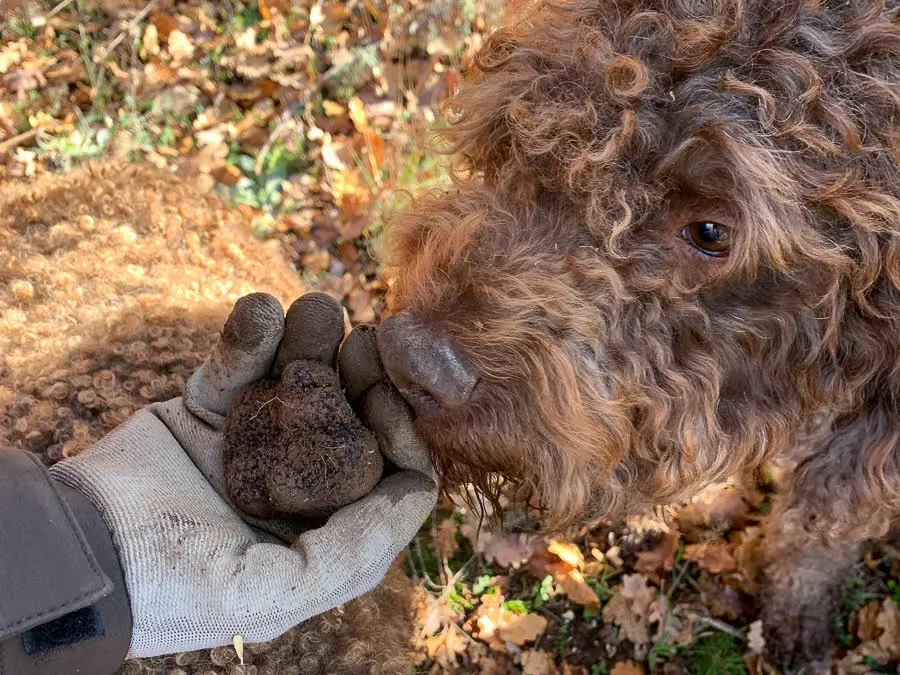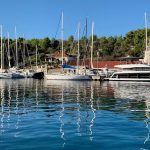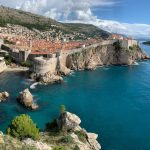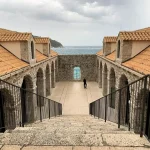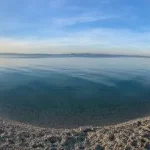December 28, 2020 – Cyndie Burkhardt continues her nomad lifestyle with her experiences in Croatia – this week with a little truffle hunting in Dalmatia.
The area surrounding Split is joining the exclusive and rarified world of wild truffle hunting, where these underground mushrooms are highly prized delicacies and adorable dogs track them down in secret locations.
One fine day I sat in a cozy hilltop restaurant in Motovun sipping Croatian red wine and gazing at both the picturesque view out across the countryside and the eyes of my handsome boyfriend across the table. We were exploring Istria and I was about to have the most anticipated meal of our trip. The entire place had a gentle whiff of truffles and it filled my nose. The waiter placed two bowls of pasta in front of us and started shaving truffles on top. He asked if I wanted more. I smiled and said “yes!” and he proceeded to cover my dish. I think I melted before I even took a bite.
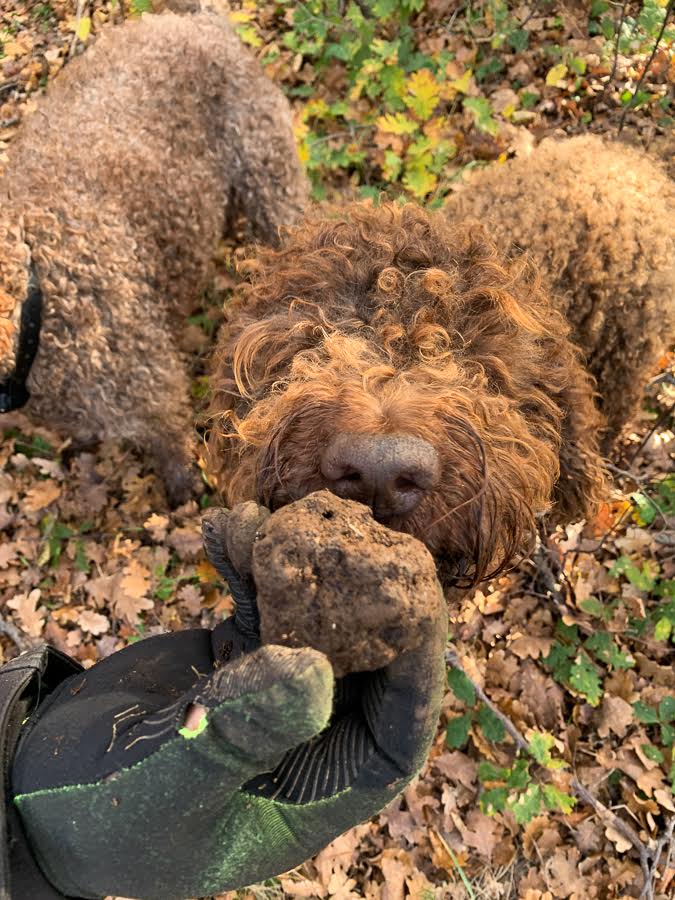
(Dogs experience the world through scent. The key to training them to find truffles is scent and positive rewards—they smell a truffle, they get a treat.)
That was years ago and I’ve eaten truffle pasta only one other time—until now, that is—but I’ve never forgotten the experience. The area surrounding Split is joining Istria and Zagreb in the truffle economy, as recently reported here. Learning that I could go on a real hunt with dogs, and eat truffles, I jumped at the chance.
Secret location
Ivana Najev met me near Mall of Split and blindfolded me before we drove to meet her father Tonci and the dogs at a secret location. It’s well known that truffles are highly coveted for elite dining tables and they rank among the rarest foods in the world with some of the highest prices. Given the stakes, I was only told that we were going to Mosor Mountain. The intrigue was killing me, but it was certain to be an adventure and I acquiesced.
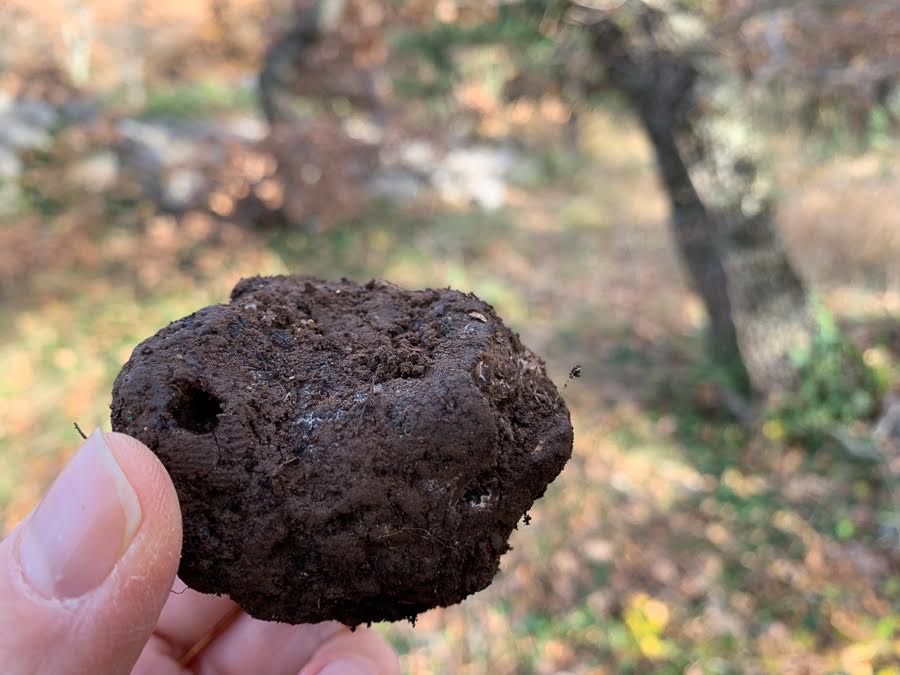
(Dalmatia’s soil is predominantly black, which produces black truffles like this black winter Tuber Melanosporum.)
Truffle dogs
Once the car stopped and I got out and saw the dogs, they were irresistible. Aldi is seven years old and a seasoned professional. Indi is one and a half years old and is still full of puppy energy. Both are medium sized Lagotto Romagnolos with golden brown curly coats, and they’re absolutely adorable. Their fur reminded me of my grandmother’s hair, God rest her soul. I liked them immediately. The dogs darted around the forest bursting with excitement before getting to work. I laughed out loud watching them run about, their faces and tails full of expression.
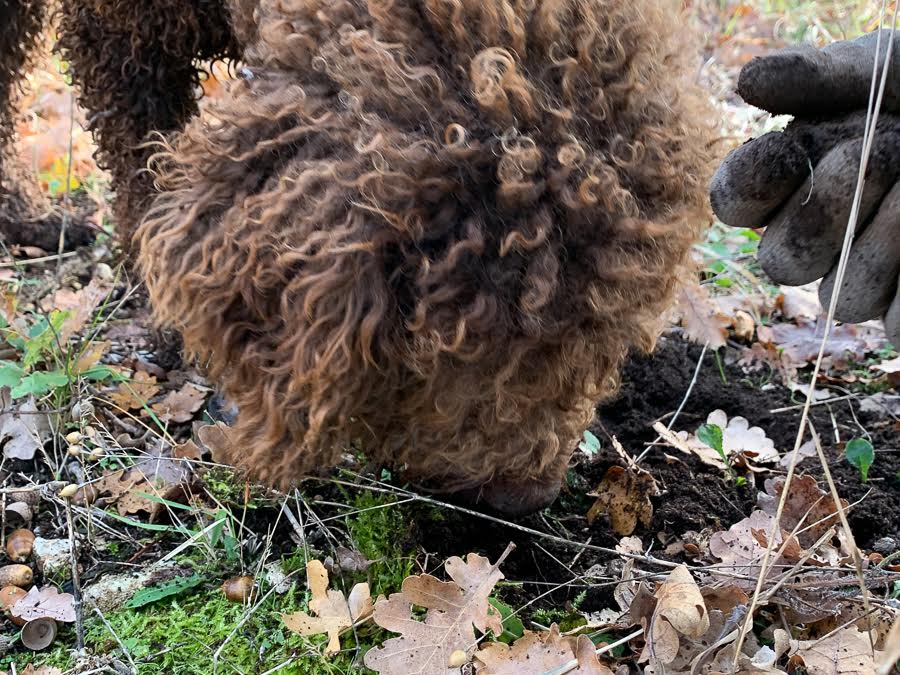
(One tactic in training dogs is to stuff toys with truffles and bury them, making a hide-and-seek game fun for them.)
When it was time to hunt the dogs were focused, moving from one spot to another as scents caught their attention. Aldi and Indi work together but they don’t dig in the same hole. When one finds a truffle spot the other one watches over his shoulder, as if waiting for the results. I don’t know if this is typical behavior for truffle dogs but it looked like team spirit, sort of like saying “hey buddy, nice score” and giving a high-five. Sometimes a dog would lay down right next to his spot while Tonci or Ivana dug into the soil to retrieve the prize.

(Lagotto Romagnolos are the primary dogs specifically bred for truffle hunting. Truffle dogs can be expensive, it’s not unheard of to pay $4,000 for a prime Lagotto and another $5,000 to train it. Training starts from two months of age and takes about two years for a dog to mature and become really good. They want to play, but they’re still working.)
Seductive smell
These trained animals were constantly moving and sniffing for good reason. As a truffle matures it releases a pungent odor when ripe, which is key to the hunting process. The smell comes from volatile organic compounds, similar to pheromones released by a male pig. I knew about truffle hunting with pigs and now I know the reason—they’re an aphrodisiac for a female. Pigs are natural hunters but also feeders, which is an abrupt way to watch your hard work and profit go down the drain; dogs are preferred.
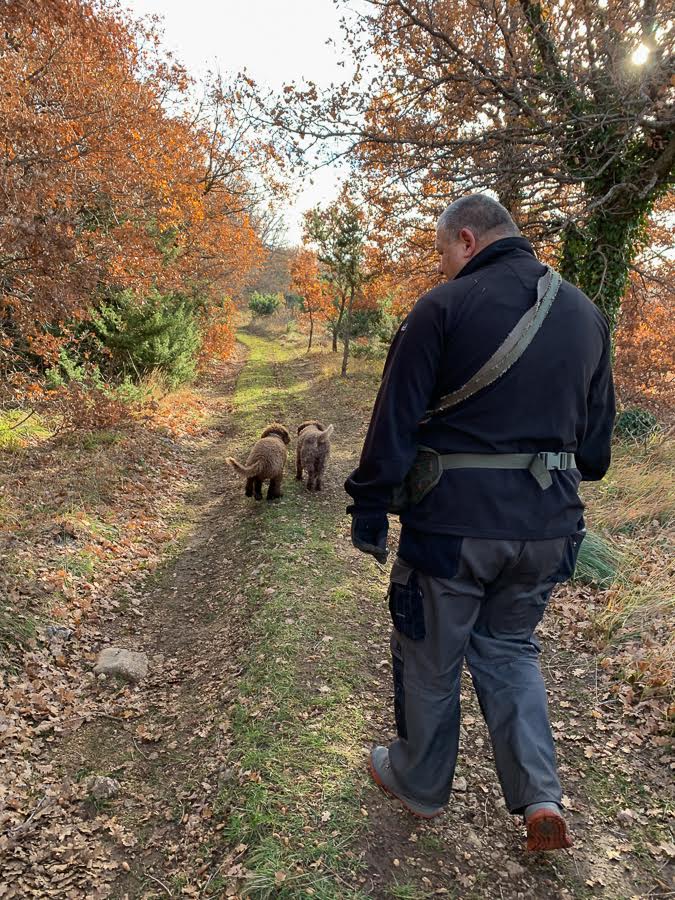
(Aldi and Indi are more than working dogs, they’re beloved family pets. They have their own room in the house with a carpet, a couch, and a television. What do they eat? Regular dog food.)
Intoxicating appeal
It turns out there’s more to truffles than sex appeal. Researchers in Italy found that black truffles produce a natural chemical compound similar to marijuana’s active compound tetrahydrocannabinol (THC). Truffles are not chemically addictive but many people find them intoxicating. “You start to eat and you always want them,” says Ivana. “The dogs have the same reaction, it’s like a drug. Indi lays down on the hole because the smell makes him happy, and crazy.”
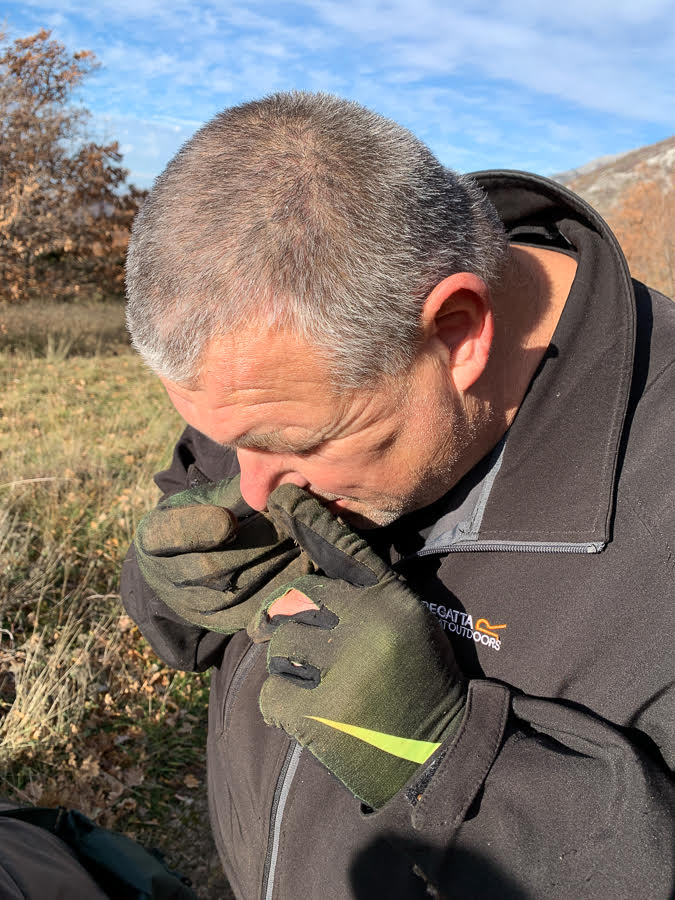
(A truffle’s size and smell are factored into their overall value, which can reach into tens of thousands of dollars at market.)
Nature Lover
How does someone get into this business anyway? It helps to be a nature lover and like most Croatians, Tonci Najev thrives on being outdoors. This is clear from his notable background as a professional diver. His feats include being on the expedition team that made the first-ever dive into the Red Lake, near Imotski, and earning records for descending 100+ meters (330+ feet) with pure oxygen, no mixing of gases in the tank.
In those days Tonci spent the mornings diving for sea coral and the afternoons hiking. Up in Split’s mountains, locals told him they’d found truffles. His interest was piqued and he began researching the land, the trees, and the dogs. Today, with perseverance and persistence, Tonci has discovered 100+ truffle locations and he holds the first and only truffle hunting business permit in Dalmatia.
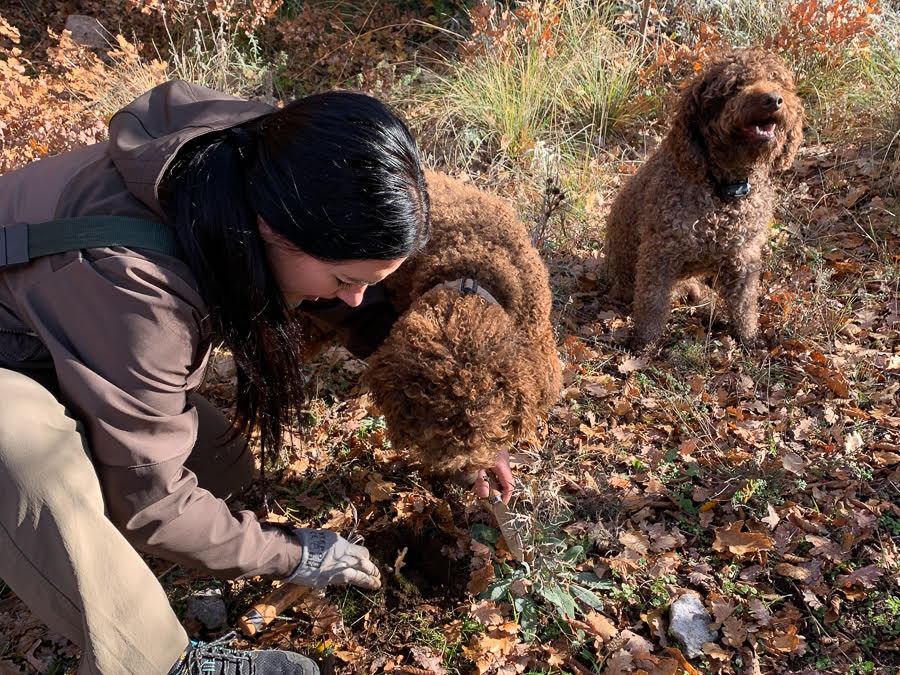
(People often ask if the dogs work just to get a reward. Ivana says Indi and Aldi are eager to please and to see their father (Tonci) happy.)
Black and white
Two main truffle species are among the most esteemed food products in the Mediterranean: Piedmont/Italian white truffles (tuber magnatum pico) and Périgord/French black truffles (tuber melanosporum). They are the first and second most expensive truffles in the world, respectively.
They grow wild in the forests of southern Europe and they’re native to France, Spain, Italy, Slovenia, and Croatia. Limited availability contributes to their value, as the majority of truffles on the market are cultivated.
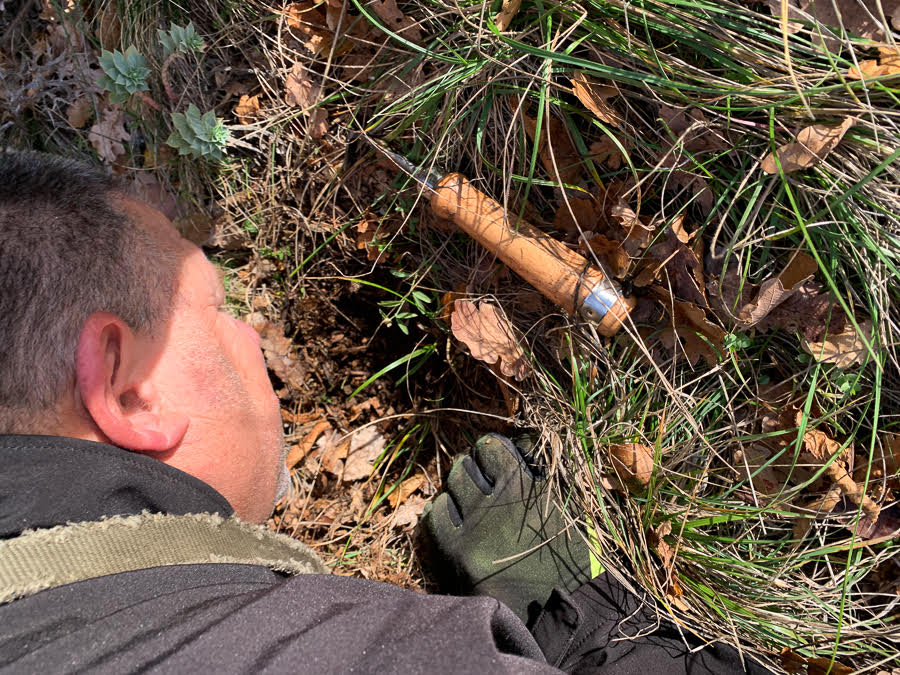
(What do Aldi and Indi eat? Regular dog food.)
Exclusive and expensive
Given the secret growing locations, labor-intensive sourcing, specially trained animals, limited quantity, and a short lifespan, truffes are a delicacy in the same camp as other rare foods: saffron, caviar, kobe beef, Densuke watermelon, and fugu.
In 2020, white winter truffles (magnatum) sold in the range of $3,000-$4,000 USD per lb. (retail) and black winter truffles (melanosporum) sold for an average of $1,500 USD per lb. Prices constantly change and vary per the yields of the growing season, the class of truffles (including size and smell), and the rarity of the type. I found reports on European wild truffles selling at auction for hundreds of thousands of dollars. Damn. I’d love to know the life story of one of those mushrooms.
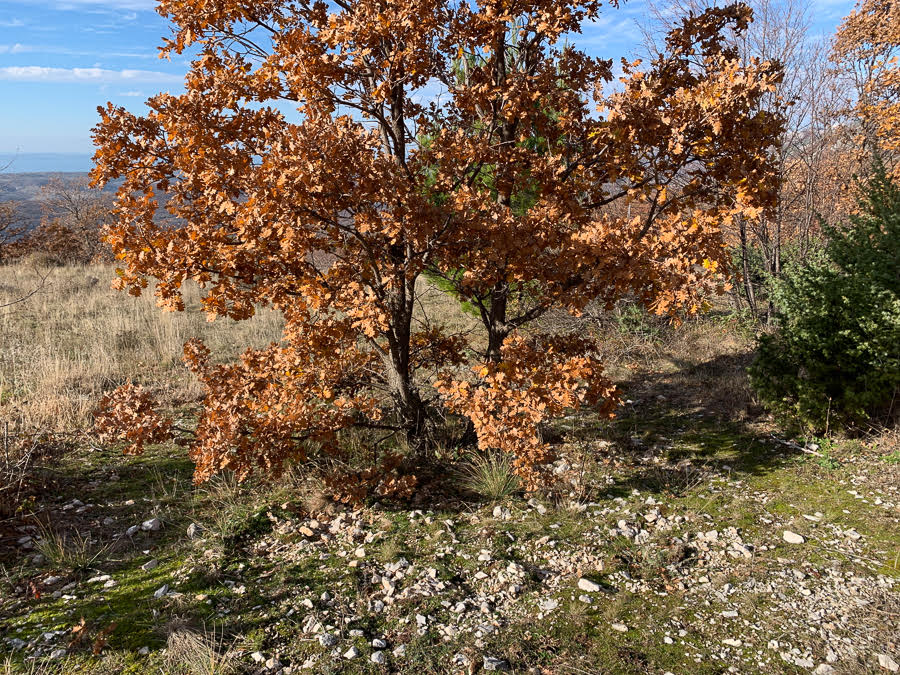
(Dalmatia’s oak trees and karst landscape make a special environment that’s ideal for wild truffles to grow.)
Dalmatian truffles
On Mosor, we found two types of black winter truffles: tuber melanosporum and tuber brumale. Yesss! We got the good ones! I was impressed that we found anything at all, the ground seems to favor rocks. It’s described as a karst landscape, one that’s made up of limestone and has some sort of a natural drainage system beneath. As it turns out, the terrain and Croatia’s climate make an ideal habitat for wild truffles.
One other thing is needed—the right tree. Truffles grow underground in symbiosis with certain trees; specifically, truffle spores and tree roots share nutrients. Dalmatia delivers on this too and some of the most common “truffle trees” grow here—Hrast (Oak), Grab (Hornbeam), Smrič (Spruce/shrub), Corylus Avellana (Hazel), and Populus Alba (Poplar).
Dobak Tek
After a successful morning hunting, it was time to eat. Our dining room was Mosor Mountain, under a large oak tree, appropriately. Once again, I enjoyed fresh truffle pasta—prepared right in front of me—while sipping local wine and gazing at Croatia’s beautiful scenery. A spread of cheese, meat, and soparnik was the second course, all of it topped with freshly shaved truffles. I was glad I had skipped breakfast.
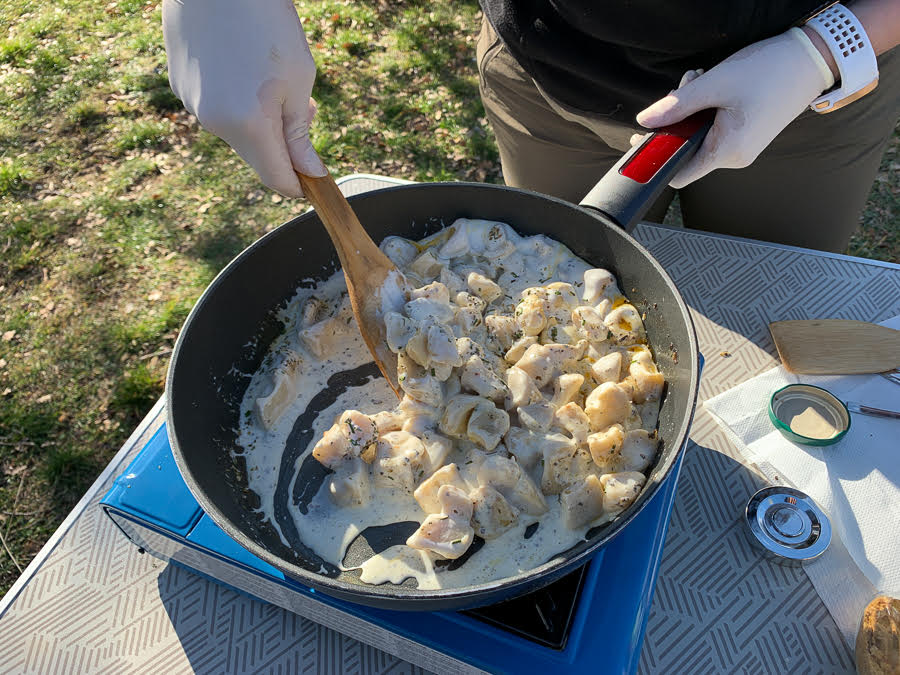
(The morning hunt culminates with a fresh meal of homemade truffle pasta. Once a truffle has been unearthed, its journey from ground to plate should be no longer than ten days.)
It’s funny, the pasta was delicious but I can’t describe the taste that truffles add. Ton
i said chocolate and strawberry but I’d go toward earthy and musky. My palate isn’t that refined but I know what I like and I craved more. I really think there’s something to that seductive, intoxicating aroma; it engulfs your senses and your brain like a potion. Maybe the mere anticipation of truffles is what drives behavior such as auction madness…
Winding down
After an upbeat morning I was pleasantly surprised that the tour kept going. On the drive back to our meeting location Ivana pointed out several places of cultural and historical importance—the remains of Skočiba, an old village in Gata that dates back to the Middle Ages; the church of Sveti Jure, on one of the highest mountain peaks in the country. It was a nice way to round things off and see more of Dalmatia’s heritage.
Leaving the seductive world of truffles, I thought about a modest comment Ivana made when we first discussed where to meet, “We do not have an office, nature is all we need.” I love that. I scored another great day outdoors, with good people and animals, in this country that I’m coming to appreciate more and more. By the way, there was no blindfold.
Learn more about tours with Truffle Hunting Dalmatia on the website.
Learn more at TCN’s Digital Nomads channel.
Story and photographs ©2020, Cyndie Burkhardt. https://photo-diaries.com
For more of Cyndie’s experiences, check out her Croatia Through the Eyes of a Digital Nomad column.

